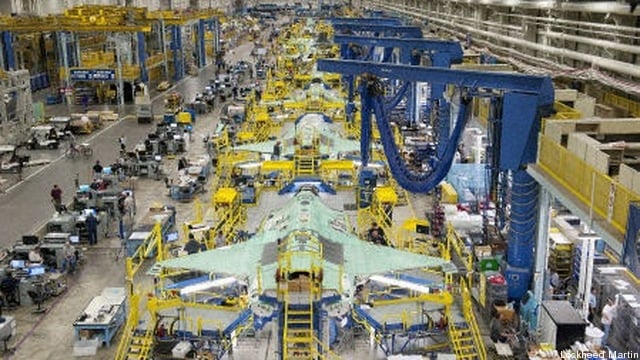 Washington: The defense industry has clearly decided looming budget cuts pose such a grave threat to its future that it must abandon its usual quiet, behind-the-scenes efforts to influence the American public and go national, using social media as well as its usual combination of education and money.
Washington: The defense industry has clearly decided looming budget cuts pose such a grave threat to its future that it must abandon its usual quiet, behind-the-scenes efforts to influence the American public and go national, using social media as well as its usual combination of education and money.
Today, the Aerospace Industries Association unveiled its new effort, Second to None, designed to convince lawmakers and voters that cutting funding to the Pentagon would hurt an already weakened industrial base, throw tens of thousands of Americans out of work in an already weakened economy and raise serious questions about the country’s military strength.
“American leadership in aerospace and defense is being threatened by forces in Congress and the administration,” says the top banner on the website. “Join us and act now before it’s too late.”
Boeing executive Vice President Jim Albaugh made the essential pitch. “We really were second to none in the 20th century. The question is, will be second to none in the 21st century,” he said at the press briefing to announce the new push. He pointed to the fact that the United States cannot put a man in orbit any more since the retirement of the Space Shuttle.
While the Super Committee did not give rise to the group, AIA’s president Marion Blakey made clear the possibility of cuts of some $600 billion to the defense budget if the panel does not cut at least $1.2 trillion from the budget has her industry very worried.
“If the cuts in the Budget Control Act are enacted, hundreds of thousands of direct and indirect jobs will be lost.” said Marion Blakey, AIA President and CEO, “While we need to be part of the solution in addressing our nation’s debt, policymakers shouldn’t make ill-considered cuts that would jeopardize our national and economic security.”
Targeting one of the arguments many politicians have made, that the nation’s withdrawal from Iraq and from Afghanistan will free up large sums of cash, Blakey would have none of it. “There is no peace dividend. I do think they need to recognize that,” she said.
AIA trotted out some new studies to show how important the industry remains. Aerospace and defense employment “stands at more than one million and revenues are nearly $331 billion [in 2010],” Blakey said, referring to a study by Deloitte Development LLC. The Deloitte study estimates “total direct employment by aerospace and defense companies at over 1 million workers.” She cited another study showing that “aerospace and defense supports 2.9 million jobs according to an analysis done for AIA by Barr Group Aerospace.”
Boeing’s Albaugh pointed to the last time the nation made significant cuts to the defense budget in the mid-1990s as a cautionary tale. He said the Los Angeles Times argued at the time that cuts to the defense budget wouldn’t hurt Southern California because it boasted such a diverse economy. But it “took 12 years for Southern California to come back after the defense cuts of the 90s,” he said. And deep cuts this time could well add an entire percentage point to the nation’s unemployment rate.
Albaugh also stressed the fragility of the industrial base several times, pointing to the troubled 787 Dreamliner, Boeing’s new commercial plane, as a symptom of the problem. Boeing had not designed a new airplane for so long — the last one was the 777 in the mid-1990s — that it had lost the collective talent to do so, he said. At a time when the United States has no new fighters or bomber in the design stage — and precious few new starts for any type of weapon — the danger is that designers and engineers will leave the companies, taking with them the expertise that “cannot be taught in schools.”
[I used the photo of the F-35 factory floor in Fort Worth to illustrate this story to show the industrial side of the business. Also, the F-35 is no longer in the design phase, leaving the country without an effort to design a new fighter. Air Force Secretary Mike Donley has said we will not invest in a sixth-generation fighter for some time.]
The space business, which straddles the military and civilian worlds perhaps more than any other industry, is particularly vulnerable to deep and sudden cuts, said David Hess, president of Pratt & Whitney, who made the country’s rockets that sent the Space Shuttle skyward. It took Pratt 50 years to build the rockets to take Americans into space, he said.
Should deep cuts come to pass, the country must understand how complex and fragile the defense industry base can be, said Dawne Hickton, CEO of RTI International Metals, producer of titanium products used in vehicle armor and advanced military aircraft. If her company lost enough business to force it shut down one of its vacuum furnaces, Hickton said it would take six to nine months to restart the equipment.
China’s new H-20 stealth bomber ‘not really’ a concern for Pentagon, says intel official
“The thing with the H-20 is when you actually look at the system design, it’s probably nowhere near as good as US LO [low observable] platforms, particularly more advanced ones that we have coming down,” said a DoD intelligence official.


























